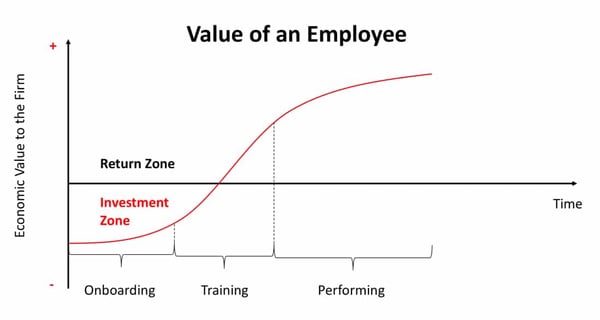4 ways to successfully onboard an employee remotely

This blog post talks about the critical process of onboarding and gives an insight into what impresses and distresses employees during the remote onboarding experience.
Congrats! You have convinced some awesome people to join your organisation. Amidst all the commotion that Covid-19 has brought, pushing all companies to move to remote work, you have managed to recruit and hire talented candidates that you’re confident will bring results to your organisation. You feel excited and are looking forward to their contribution.
Now, your task is to onboard them remotely during Covid-19 and give them the resources they need to thrive in your organisation.
If that sentence made the back of your neck start to sweat a little, don’t worry, we’re here to help. After you read the next ten minutes of this blog, you are going to know exactly what to do to onboard your new hires with confidence and pass the onboarding remotely test.
To give you a deep understanding of the remote onboarding experience, we went ethnographic style and directly talked with people who have recently experienced it. We spoke with five highly engaged, generation Y employees who have joined unique companies; large multinational consulting firms, small boutique consulting arms, small European startups, mid-sized German and mid sized American scale -ups.
Four out of five of the new hires have decided to stay past their onboarding experience. These insights will give you a realistic picture of what is being offered in today's market, what is expected from today’s employees and what can be improved by employers going forward.
Onboarding: what's that again?
Onboarding is a very important business practice usually commencing on the first day of work and taking anywhere from one week to one month to complete. Onboarding is important because it gives new hires a picture of what their employee experience at the company will be in the future and a clear ‘Yes’ or ‘No’ answer to the question of: “Do you see a future there?” that their friends will ask.
During onboarding, new hires will be observing how organised your processes are, how colleagues speak to each other in informal and formal settings and what “good” looks like from a performance perspective. A successful onboarding experience leaves candidates:
- feeling welcomed,
- engaged,
- cared about
- and confident that their choice of employer was the right one.
Meaning, this is a great opportunity to very transparently showcase your culture and what the expectations for anyone who works there is, going forward.

In this graph created by Kosinska, A, you can see the relationship between Economic Value and Time split into Investment and Return zones. You can see here that onboarding is part of the investment zone, meaning onboarding is the time to invest in your employees, through effort and care, in order to get a proper return on investment (ROI) when Time increases.
According to Gallup and Tata Consulting, a positive onboarding experience improves the chances that your new hire will stay at your organisation beyond the first few weeks by 82% and a negative onboarding experience makes your new hire 2x more likely to leave.
Knowing that hiring is a timely and very expensive process, it's best to avoid doing it twice and instead properly prepare a convincing onboarding experience. To better understand what the current market looks for in a remote onboarding experience, we went straight to the source.
Best and worst remote onboarding experiences
We went out and interviewed five millennial employees about their recent remote onboarding experience during Covid- 19 and identified four main areas that make the biggest impact to the experience:
- People,
- Strategy,
- Processes
- and Technology.
If you think through these areas well and organise them for the first days of their arrival, you will be well on your way to moving your new hires from outsiders to insiders who want to contribute for the long-term.
"When it comes to onboarding a remote employee, four main parts are essential: People, Strategy, Processes and Technology."
Let’s begin onboarding remote employees
In the following, Thumbs Up 👍🏻 will represent what new hires enjoyed from their onboarding experience and Thumbs Sideways 👉 will represent what new hires wish was done better. Another way to think about it is, Thumbs Up represents what you should include in your onboarding experience and Thumbs Sideways represents what you can include to differentiate yourself and stand out from your competitors.
Part 1: People
Ensuring your new hire meets the important and relevant people they will collaborate with or contribute to, in their new role. This includes Managers, Teammates, Executives, New Hires and HR.
👍🏻 Executive Presence
- Having a member of the executive team speak with them over the phone for 20 - 30 minutes.
- If the organisation is larger and the employee more junior, the executive can pre-record a 20 -30 minute welcome video and send it to them on their first day.
👍🏻 Department Conversations
- Introduction video calls with people from different departments, in the form of 1 on 1 conversations, to explain their roles and how they can expect to work with each other in the future.
👍🏻 Team Meetings
- Opportunity to meet team members who they will work with on an everyday basis.
- If the team is larger, a game of 20 minute Russian Roulette can be played. Pre - assigned questions such as, “When did you start at the company, why did you choose to work here, what did you do before-hand and/or what’s your goal for this year?” can be introduced to facilitate the introductions if needed.
👉 Forced Social Gatherings
- There was a lack of informal social gatherings to stop the work talk and connect on a more personal level. In standard onboarding, this would look like after work dinners, after meeting coffee runs or Friday evening drinks.
- To improve on this, you can think of ways to connect your new hires remotely and build in informal dialogue. For example, plan an after work zoom session where people can eat dinner together, introduce virtual break times and/or coordinate chat groups with people working in the same city to give them the chance to meet up in person (applicable to city regulations).
👉 Introduction to HR
- There was a lack of HR introductions, leaving them unsure of who to contact if something HR specific should come up.
- To improve this, have HR meet them for a designated time slot or at minimum send them a welcome and introduction email.
👉 Individual Identity
- There was a lack of opportunity to speak about their experiences and/or strengths that they are proud of.
- To improve on this, you can think of ways to give presentation time to new hires so they can share something unique about themselves or their strengths. For example, in a group setting ask each of them to speak about 3 major milestones in their career and how that brought them to this moment.
Part 2: Strategy
Ensuring your new hire understands the company strategy, where the company intends to go and what capabilities it needs to get there.
👍🏻 Individual role insights
- An initial phone call with the manager explaining the new hires key priorities and responsibilities for the first 3 months of their job and how the manager sees their role today/ how they see their role evolving over time.
👍🏻 Core Technology insights
- A call with the founder of the organisation to understand the core technology of the business and her/his vision for the future. If you work in a multinational firm, have someone from the technical team speak to a group of new hires.
👉 Commercial insights
- There was a lack of insight into the core strategy of the company. For example, who are the customers, who are the most important customers, which industries are most important, what are the commercial priorities, etc.
- To improve this, new hires should be given a document that describes this in detail, so they can review it and understand the bigger picture of the organisation promptly.
Part 3: Processes
Ensuring your new hire has the relevant resources that describe how to use various functionalities.
👍🏻 Onboarding Progress Sheet
- A document including all onboarding activities allowing them to identify what they completed and what is still left to complete, to successfully complete onboarding.
👍🏻 Paperwork + Admin
- All paperwork for signing was sent a few days in advance of their first day, so they could read it and ask any questions in the 30 minute pre- scheduled meeting with the office admin team.
👍🏻 Welcome Packages
- Packages sent to their homes (or available for pick up) with company swag items in the form of t-shirt, goodies and trinkets.
👉 Scheduled Calls
- Meeting invites did not have an objective included and no clarity on who the person they were meeting was.
- To improve this, be sure to specify who will be at the virtual meeting, their roles, a photo of them and a clear objective.
👉 Remote Working Manual
- There was a lack of remote working documentation that shared any strict rules, regulations, best practices and insights on how to work remotely.
- To improve this, create or find an all encompassing remote manual that you can easily hand to all employees (current and incoming).
Technology
Ensuring your new hire has working technology and relevant access to that technology.
👍🏻 Equipment
- Login usernames and passwords were sent in advance for any video conferencing or chat tools being used during onboarding.
- Designated IT support personnel assigned to answer any access questions and a one hour meeting scheduled with them for further questions.
- Choice of laptop, desktop screen, and ergonomics chair shipped directly to their home and arrived at least 1 day in advance of their first day.
- A €100 voucher to purchase any other tech needed to work remotely.
👉 Zoom Fatigue
- Zoom video chats for 8+ hours a day are very tiring, especially for those not used to working remotely.
- To improve this, make sure you spread out the most mandatory training throughout the week, because new hires will need time to process new information. Also, give non mandatory meetings the chance to be done over the phone.
The right resources to succeed on the job
Regardless if you’re an early stage startup or a large multinational, your employee’s onboarding experience will shape their perception of your company for the rest of their relationship with you. If your company's remote onboarding is treated as an investment period and takes into consideration People, Processes, Strategy and Technology, you will be giving your talented new employee(s) the resources needed to succeed on the job.
This is important because if you set them up for success, they will have a higher chance at becoming successful at the job, therefore giving you a fantastic ROI and a strong future to look forward to together.
Goodluck with your remote onboarding process, and for further information about Kenjo’s Remote Onboarding capabilities to build a workplace people love.
About the author
Aneta Kosinska works as a remote change consultant to leaders on digital transformation projects, specialising in communication and training.

